Mumps
What You Need to Know
What Is Mumps?
Mumps is a viral infection.
- Mumps symptoms include muscle pain, loss of appetite, fatigue, headache, low-grade fever, and swelling of the parotid glands (located on the sides of the face between the ear and jaw).1 Symptoms typically resolve after 10 days.2
- Some mumps infections have no symptoms (are asymptomatic).2
- Most mumps infections are benign and are not reported to public health departments.3
- Before the mumps mass vaccination program was introduced, most of the population contracted mumps and obtained lifetime immunity by adolescence.4
-
In rare situations, mumps can be fatal, cause deafness, or cause impaired fertility in males.4
What Are the Risks?
Cases of mumps that are fatal or result in permanent disability are rare in the United States. Before the introduction of the mumps vaccination program, 1 in 66,000 or 0.002% of mumps cases were fatal or resulted in permanent disability (Fig. 1).5
- 1 in 93,000 or 0.001% of mumps cases were fatal.6
- 1 in 360,000 or 0.0003% of mumps cases resulted in permanently impaired hearing.7
- 1 in 290,000 or 0.0004% of mumps cases resulted in permanently impaired fertility in males.8
What Treatments Are Available?
Because mumps resolves on its own in almost all cases, usually only rest and hydration are necessary.
What About the Vaccine for Mumps?
The live mumps vaccine was introduced in the U.S. in 1967 and is now available as a component of the measles, mumps, and rubella (MMR) vaccine. It has significantly reduced the incidence of reported cases of mumps infections; however, immunity from the vaccine wanes so that one quarter of vaccinated children lose protection within 7.9 years, half within 19 years, and three quarters within 38 years (Fig. 2).9
The manufacturer’s package insert contains information about vaccine ingredients, adverse reactions, and vaccine evaluations. For example, “M-M-R II vaccine has not been evaluated for carcinogenic or mutagenic potential or impairment of fertility.”10 Furthermore, the risk of permanent disability and death from the MMR vaccine has not been proven to be less than that of mumps (Fig. 3).11,12
Immunity from the MMR vaccine wanes so that one quarter of vaccinated children lose protection within 7.9 years, half within 19 years, and three quarters within 38 years.
This graph shows the mumps mortality and permanent disability rate before the vaccine was introduced and compares it to the leading causes of death in children under age 10 today. In the pre-vaccine era, the mumps mortality and permanent disability rate per 100,000 was 0.06 for children under age 10. In 2015, the mortality rate per 100,000 for homicide was 1.3, followed by cancer (2.0), SIDS (3.9), unintentional injury (8.2), and congenital anomalies (13.6). The rate of death or permanent disability from the mumps vaccine is unknown because the research studies available are not able to measure it with sufficient accuracy.
What Treatments Are Available?
Because mumps resolves on its own in almost all cases, usually only rest and hydration are necessary.
What About the Vaccine for Mumps?
The live mumps vaccine was introduced in the U.S. in 1967 and is now available as a component of the measles, mumps, and rubella (MMR) vaccine. It has significantly reduced the incidence of reported cases of mumps infections; however, immunity from the vaccine wanes so that one quarter of vaccinated children lose protection within 7.9 years, half within 19 years, and three quarters within 38 years (Fig. 2).9
The manufacturer’s package insert contains information about vaccine ingredients, adverse reactions, and vaccine evaluations. For example, “M-M-R II vaccine has not been evaluated for carcinogenic or mutagenic potential or impairment of fertility.”10 Furthermore, the risk of permanent disability and death from the MMR vaccine has not been proven to be less than that of mumps (Fig. 3).11,12
Immunity from the MMR vaccine wanes so that one quarter of vaccinated children lose protection within 7.9 years, half within 19 years, and three quarters within 38 years.
This graph shows the mumps mortality and permanent disability rate before the vaccine was introduced and compares it to the leading causes of death in children under age 10 today. In the pre-vaccine era, the mumps mortality and permanent disability rate per 100,000 was 0.06 for children under age 10. In 2015, the mortality rate per 100,000 for homicide was 1.3, followed by cancer (2.0), SIDS (3.9), unintentional injury (8.2), and congenital anomalies (13.6). The rate of death or permanent disability from the mumps vaccine is unknown because the research studies available are not able to measure it with sufficient accuracy.
References
- Centers for Disease Control and Prevention. Epidemiology and prevention of vaccine-preventable diseases. 14th ed. Hall E, Wodi AP, Hamborsky J, Morelli V, Schillie S, editors. Washington, D.C.: Public Health Foundation; 2021. 226. https://physiciansforinformedconsent.org/cdc-pink-book-14th-edition-2021.
- Centers for Disease Control and Prevention. Epidemiology and prevention of vaccine-preventable diseases. 13th ed. Hamborsky J, Kroger A, Wolfe S, editors. Washington, D.C.: Public Health Foundation; 2015. 248, 249, 251. https://physiciansforinformedconsent.org/cdc-pink-book-13th-edition-2015/.
- Magno H, Golomb B. Measuring the benefits of mass vaccination programs in the United States. Vaccines. 2020 Sep 29;8(4):4. https://pubmed.ncbi.nlm.nih.gov/33003480/; before the mumps mass vaccination program was introduced, there were 4 million annual mumps cases of which 212,0002 (about 5%) were reported.
- World Health Organization. Mumps virus vaccines. Wkly Epidemiol Rec. 2007 Feb 16;82(7):52-4. https://apps.who.int/iris/rest/
bitstreams/958045/retrieve. - Before the vaccine, out of the 4 million annual cases of mumps, 43 were fatal,6 11 resulted in permanently impaired hearing,7 and 7 resulted in permanently impaired fertility.8 Therefore, 61 mumps cases out of 4 million (1 in 66,000) resulted in death or permanent disability.
- Centers for Disease Control and Prevention. Epidemiology and prevention of vaccine-preventable diseases. 13th ed. Hamborsky J, Kroger A, Wolfe S, editors. Washington, D.C.: Public Health Foundation; 2015. 359, Appendix E3. https://physiciansforinformedconsent.org/cdc-pink-book-13th-edition-and-appendix-e-2015-combo; between 1963 and 1966, annually there were about 43 mumps fatalities out of 4 million cases,3 resulting in a case fatality rate of 1 in 93,000 (0.001%).
- Magno H, Golomb B. Measuring the benefits of mass vaccination programs in the United States. Vaccines. 2020 Sep 29;8(4):3. https://pubmed.ncbi.nlm.nih.gov/33003480/; the study observed 11 cases of permanently impaired hearing from mumps out of 4 million cases — a rate of 1 in 360,000 or 0.0003%.
- Magno H, Golomb B. Measuring the benefits of mass vaccination programs in the United States. Vaccines. 2020 Sep 29;8(4):3. https://pubmed.ncbi.nlm.nih.gov/33003480/; the study observed 7 cases of permanently impaired fertility from mumps out of 2 million cases in males — a rate of 1 in 290,000 or 0.0004%.
- Lewnard JA, Grad YH. Vaccine waning and mumps re-emergence in the United States. Sci Transl Med. 2018 Mar 21;10(433):2. http://stm.sciencemag.org/content/10/433/eaao5945.
- Merck. Rahway (NJ): Merck and Co., Inc. M-M-R II (measles, mumps, and rubella virus vaccine live); revised 2023 Oct [cited 2024 Jan 27]. 8. https://www.merck.com/product/usa/pi_circulars/m/mmr_ii/mmr_ii_pi.pdf.
- Physicians for Informed Consent. Newport Beach (CA): Physicians for Informed Consent. MMR (measles, mumps and rubella) – vaccine risk statement (VRS); 2024 Aug. https://physiciansforinformedconsent.org/mmr-vrs.
- Demicheli V, Rivetti A, Debalini MG, Di Pietrantonj C. Vaccines for measles, mumps and rubella in children. Cochrane Database Syst Rev. 2012 Feb 15;2012(2):CD004407. https://pubmed.ncbi.nlm.nih.gov/22336803/.
- Centers for Disease Control and Prevention. Washington, D.C.: U.S. Department of Health and Human Services. 10 leading causes of death by age group, United States—2015. https://physiciansforinformedconsent.org/cdc-leading-causes-of-death-age-group-2015/.
- Center for Disease Control. Mumps surveillance, January 1972–June 1974. Atlanta, GA: Center for Disease Control; 1974. 6. https://books.google.com/books?id=jLHnAAAAMAAJ&pg=PP1&lpg=PP1&dq=Mumps+surveillance:+January+1972%E2%80%93
June+1974&source=bl&ots=SjQacr1cVN&sig=ACfU3U08b41XCTFJo4QD_h-T7OQaN7fr1g&hl=en&sa=X&ved=
2ahUKEwiM2Jaul7mBAxUulWoFHVpFDX84ChDoAXoECAIQAw#v=onepage&q=Mumps%20surveillance%3A%20January%201972%E2%80%93June%201974&f=false; 41% of the most severe cases of mumps occur among children under age 10, and before the vaccine, 61 annual mumps cases resulted in permanent disability or death,5 therefore, permanent disability or death from mumps occurred in 25 (41% of 61) children under age 10 out of population of about 40 million (1 in 1.6 million).
Published 2024 Aug

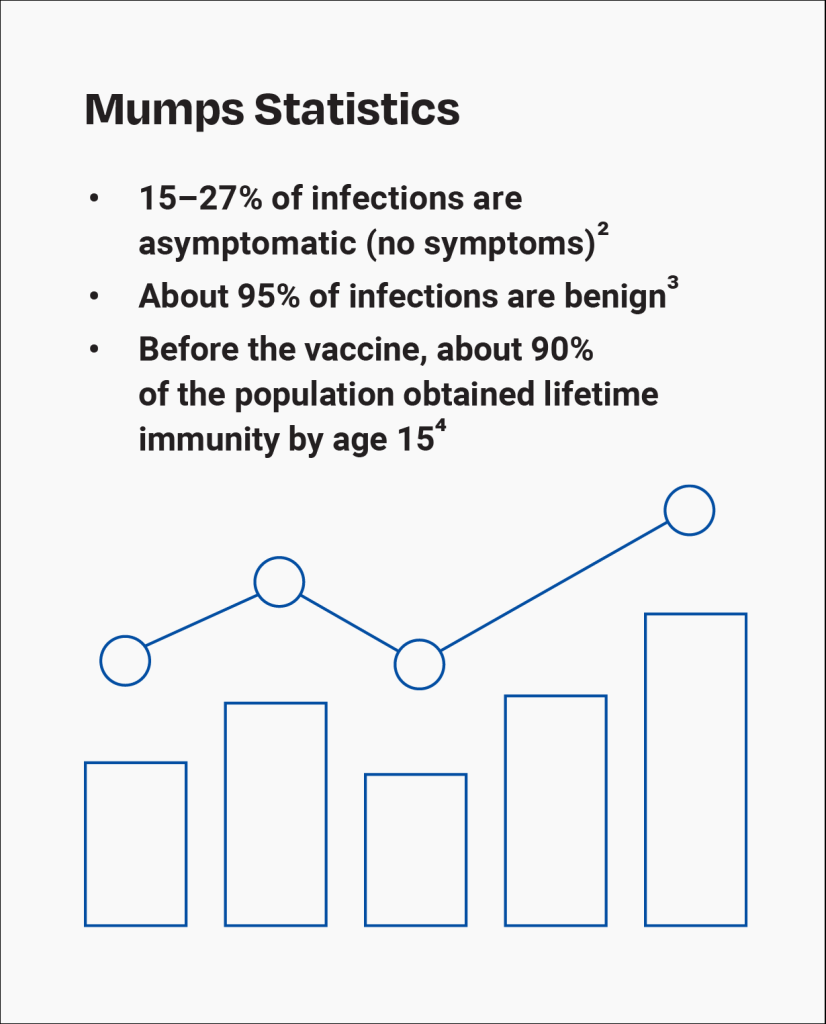
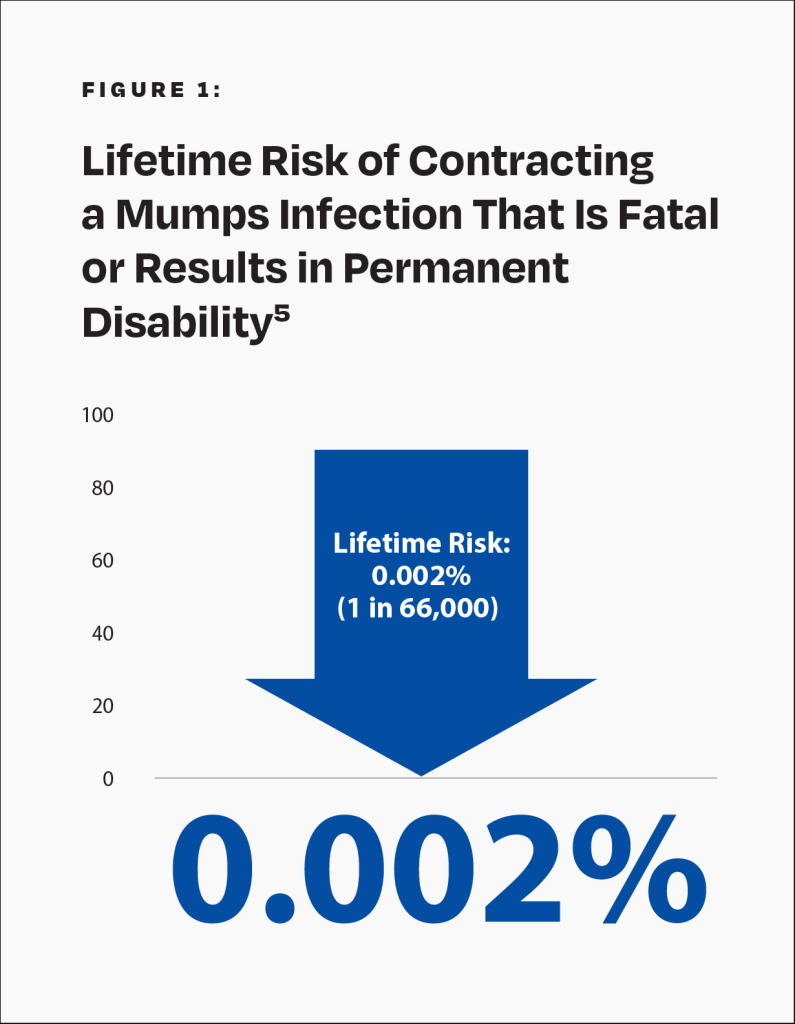
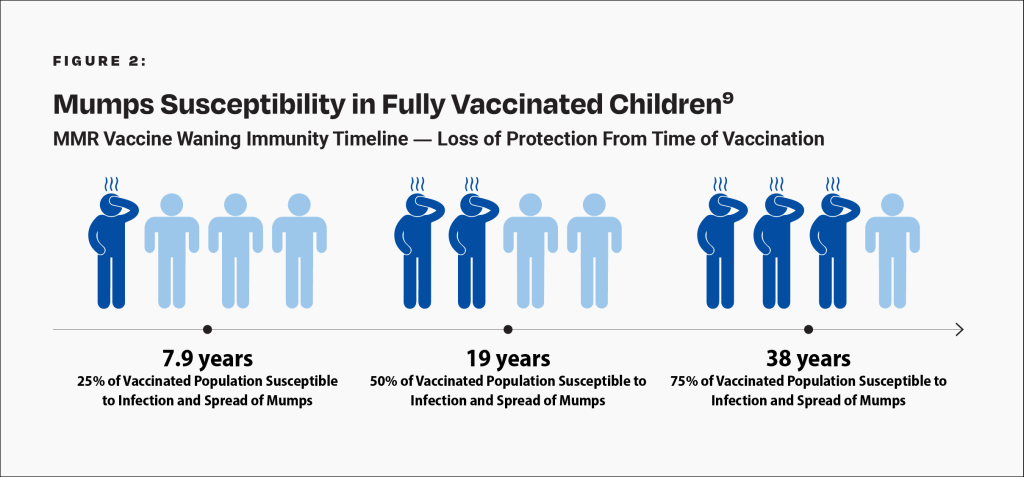
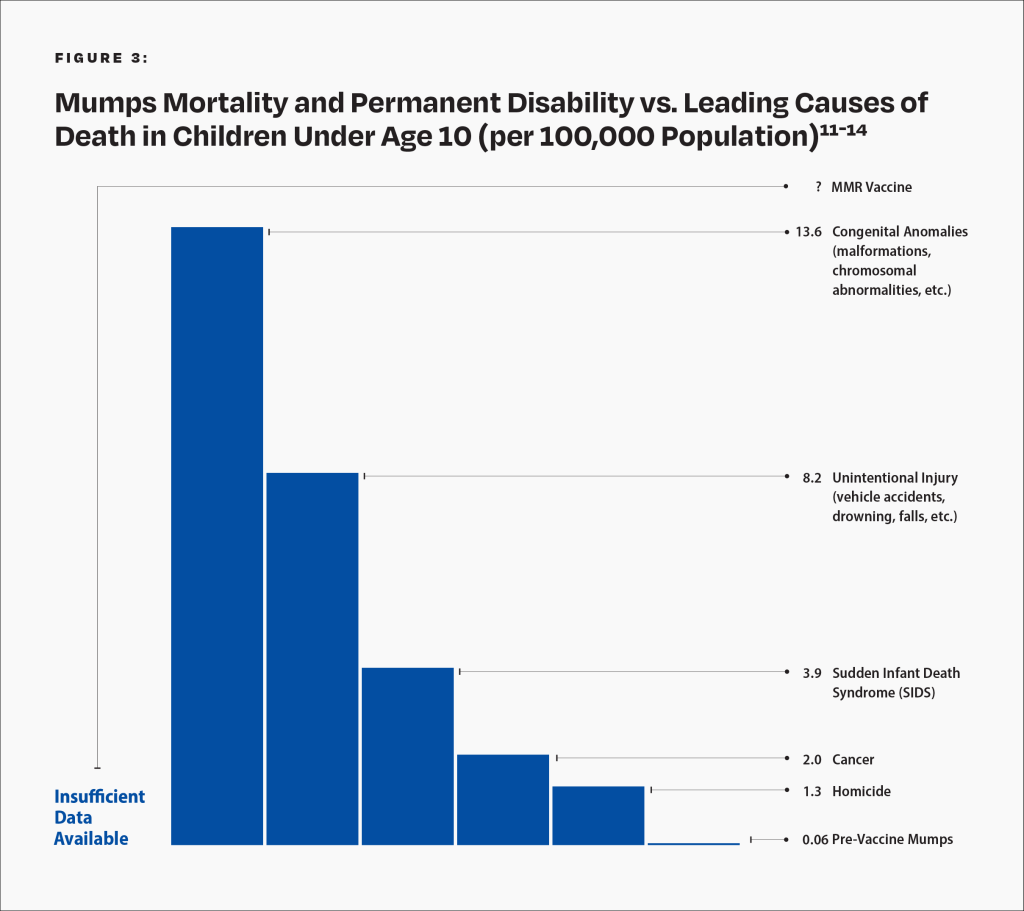
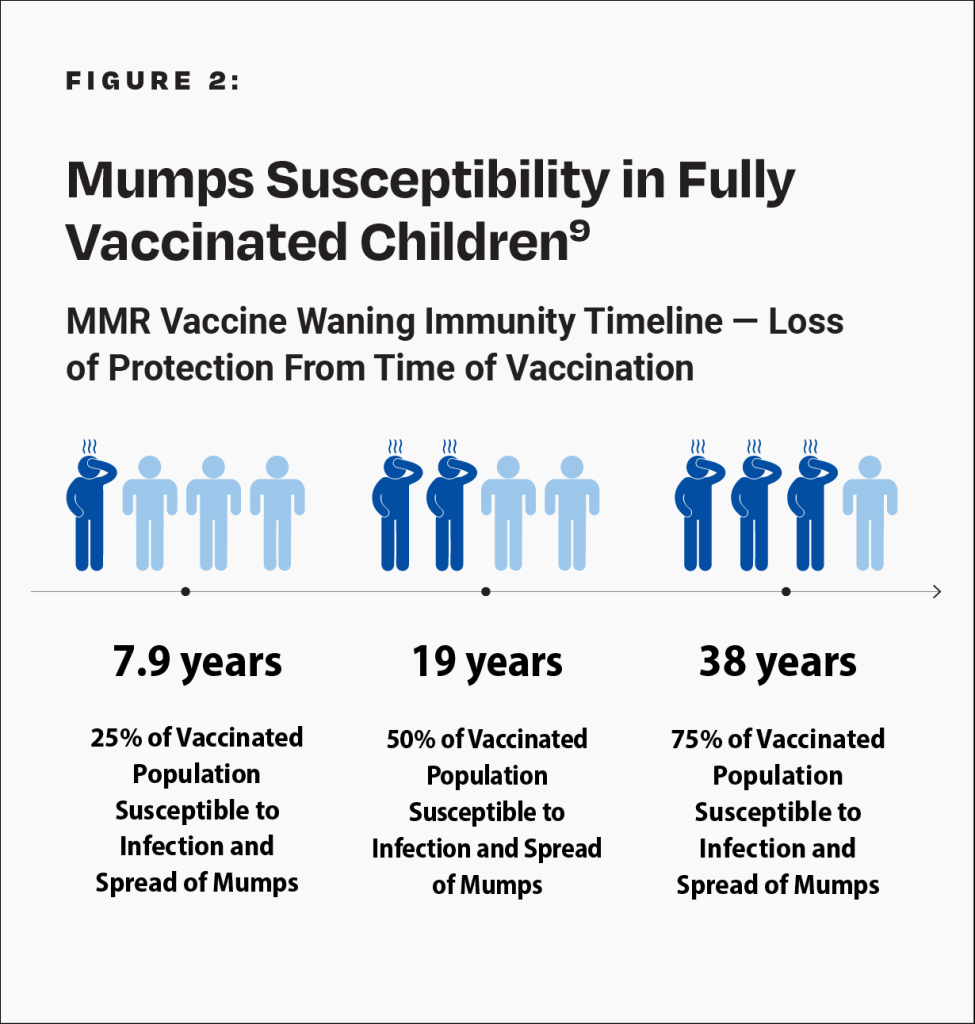
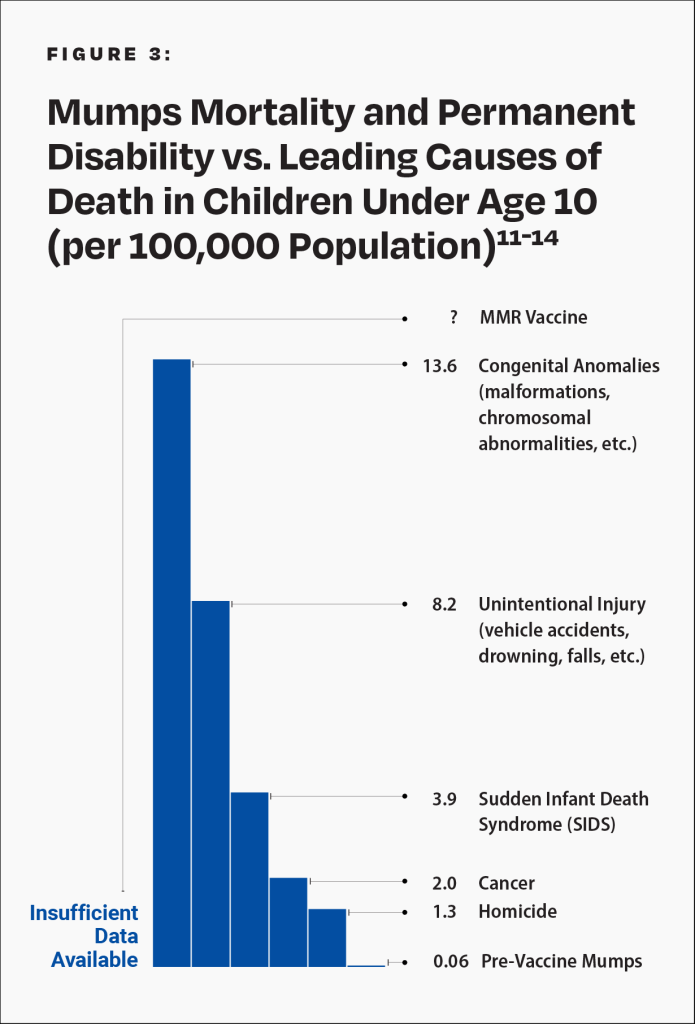
Mumps – Disease Information Statement (DIS)